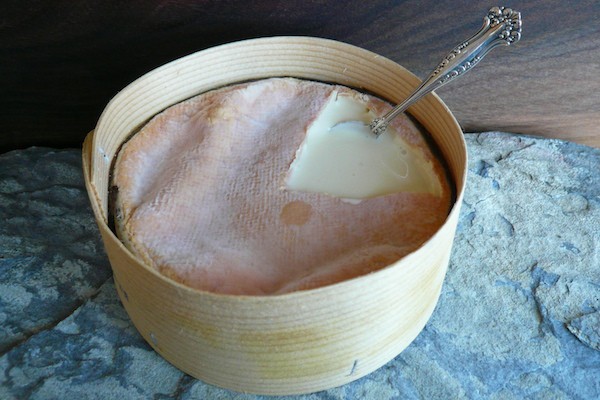
If you like smelly, stinky cheeses, then washed rind cheese is for you. When people complain about cheese smelling like feet, they’re probably thinking of washed rind cheese. Its odor might be powerful, but don’t let the smell fool you. Underneath the distinctive orange rind is a tasty gooey flesh that will have you reaching for a spoon.
Bathed in Glory
Just like the brine you soak your Thanksgiving turkey in, washed rind cheese is rubbed down with a salty brine. Wine, beer, or other spirits are commonly added to the brine, depending on the region. Belgian Trappist Monks use Belgian ale, while French cheesemakers bathe the famous Époisses in Burgundy wine. Washed rind cheese is washed a couple times a week, which helps break down the curd from the outside, influencing the texture, aroma and flavor of the entire cheese. Many washed rinds are so gooey, they are put in little wooden crates to prevent from spilling out.
The tradition of washed rind cheese originated from 16th-century French monks, who milked cows and made liquor as part of their duties. When they discovered washing young cheese in extra wine imparted an unrivaled funk, Époisses was born. Not only did the brine prevent the rind from cracking and retain moisture, but it gave the cheese a meaty flavor, something the monks missed while fasting.
Washed rind cheeses are recognizable for their orange-pink rinds that are tacky (not slimy) to touch. The cause of this unique rind is due to the growth of Brevibacterium linens, aka b-linens, which causes the strong smell. The bacteria can occur naturally in an aging room or can be added to the milk or applied directly to the rind of a cheese. The bacteria results in less acidic cheese with a pronounced pungency. Washed rinds may have a bit of crunch or a sandy quality in their rind, which are just salt crystals left behind from their salty brines.
What to buy?
Famous washed rind cheeses include Limburger, Vacherin Mont D’Or, and Taleggio, which is less assaulting than its other European counterparts. You might not know that Gruyère and Morbier are also washed rind cheeses. American washed rinds are having their time in the sun, too. Winnimere, Red Hawk, and Dorset are some of the few stinky specimens popping up at cheese counters across the country. Cowgirl Creamery’s Red Hawk, known as the “gateway” washed rind cheese, is made from a triple cream recipe and has mild rind.
Often a troubling question is how much stink is too much stink. The best advice is to trust your instincts. While a strong odor is perfectly normal, if you smell ammonia (think Windex), then the cheese is probably past its prime. Brown or fuzzy spots are also bad signs. With these cheeses it’s important to keep them wrapped and in tight-lid containers, for their own protection and the smell of your fridge!
Pairings
- A dark Belgian Ale or an IPA would match the pungency of washed rind cheese. More of a wine drinker? Pair with fruity reds and whites like Cotes du Rhone, Pinot Grigio or Riesling.
- Washed rind cheeses can stand alone on a cheeseboard but make a spellbinding addition to a lunch of pumpernickel bread, cured meats, and cornichons. Additionally, they make great pairings with ripe stone fruit like peaches and plums.
- This earthy Taleggio Risotto is a fantastic fall dinner.






